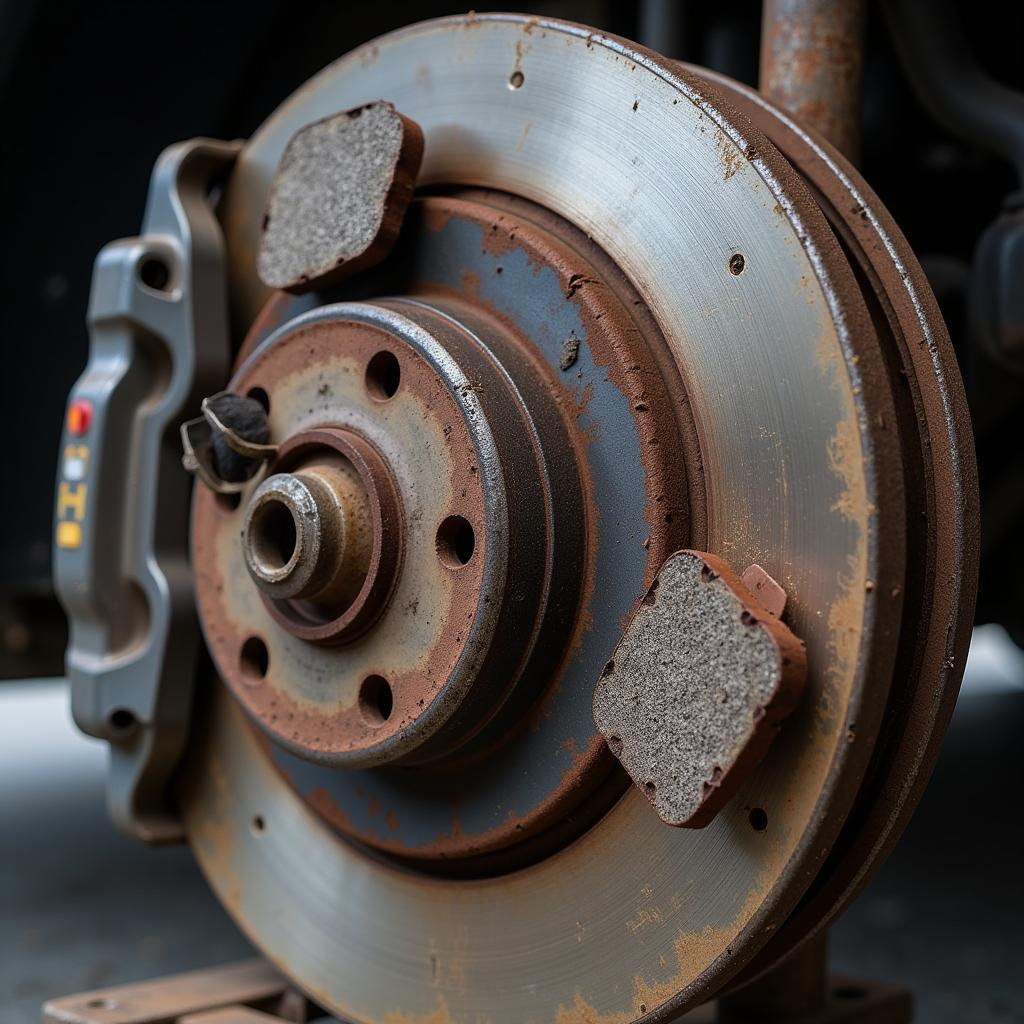Dashboard warning lights related to your brakes can be unsettling. Understanding what these dashboard warning lights brake mean and how to address them is crucial for your safety and the longevity of your vehicle. This guide will equip you with the knowledge to confidently handle brake warning lights, from simple fixes to more complex issues requiring professional help.
Understanding Your Brake Warning Lights
Several different lights on your dashboard can relate to your brakes. Each light signals a specific issue, and recognizing the difference is the first step to resolving the problem. The most common dashboard warning lights brake include the brake system warning light, the ABS warning light, and the parking brake light. Let’s explore each one.
Brake System Warning Light
This light, often represented by a circle with an exclamation point inside and surrounded by parentheses, typically indicates one of two things: low brake fluid or a problem with your braking system. Low brake fluid can be caused by a leak or worn brake pads. A problem with the braking system itself can range from a faulty brake line to a malfunctioning master cylinder. Ignoring this light can lead to brake failure, a dangerous situation.
ABS Warning Light
The ABS, or Anti-lock Braking System, warning light usually illuminates as “ABS.” This light signals a problem with your anti-lock braking system. While your regular brakes may still function, the ABS, which prevents wheel lockup during hard braking, is disabled. This can be especially dangerous in slippery conditions.
Parking Brake Light
This light, often a “P” enclosed in a circle, simply indicates that your parking brake is engaged. If the light stays on after releasing the parking brake, there could be a problem with the parking brake cable or switch.
“Drivers often underestimate the importance of addressing brake warning lights promptly. A simple fix today can prevent a major repair tomorrow,” says automotive diagnostics expert, Michael Carter, ASE Certified Master Technician.
97 honda civic brake dashboard warning lights
Troubleshooting Dashboard Warning Lights Brake
When a brake warning light appears, the first step is to check your owner’s manual. This manual will provide specific information for your car model. However, some general troubleshooting steps can help you identify the problem.
- Check the parking brake: Ensure the parking brake is fully released.
- Check brake fluid level: Locate the brake fluid reservoir under the hood and check the fluid level. If it’s low, add the correct type of brake fluid.
- Inspect brake pads: Visually inspect your brake pads for wear. If they appear thin, they may need replacement.
- Listen for unusual noises: Listen for any grinding, squeaking, or clicking sounds coming from your brakes.
 Worn Out Brake Pads
Worn Out Brake Pads
2016 honda civic dashboard brakes warnings
“Regular brake maintenance is key to preventing issues. Simple checks like inspecting your brake pads and fluid level can save you time and money in the long run,” advises Sarah Miller, Lead Automotive Systems Engineer at AutoTech Solutions.
When to Seek Professional Help
If you’ve tried basic troubleshooting and the dashboard warning lights brake persist, it’s time to seek professional help. A qualified mechanic can diagnose the issue using advanced diagnostic tools and perform the necessary repairs. Ignoring a brake warning light can lead to serious safety risks.
2007 hyundai sonata brake light on dashboard warning lights
Conclusion
Dashboard warning lights brake are crucial safety indicators. Understanding their meaning and taking appropriate action can prevent accidents and costly repairs. By following the advice outlined in this guide, you can maintain a safe and reliable braking system. Never ignore a brake warning light – your safety depends on it.
audi a4 dashboard warning lights brake
2002 toyota camry brake dashboard warning lights
FAQ
- What does the brake warning light mean? It typically indicates low brake fluid or a problem with the braking system.
- What should I do if my ABS light comes on? While your regular brakes might still work, your ABS is disabled. Get your car checked by a mechanic as soon as possible.
- Is it safe to drive with the brake warning light on? No, it’s not safe. It could indicate a serious problem that could lead to brake failure.
- How often should I check my brake fluid? Check your brake fluid level at least once a month.
- How often should I have my brakes inspected by a professional? It’s recommended to have your brakes inspected at least once a year or every 12,000 miles.
- Can I top off my brake fluid myself? Yes, but ensure you use the correct type of brake fluid for your car.
- What causes the parking brake light to stay on? It could be a problem with the parking brake cable or switch.
